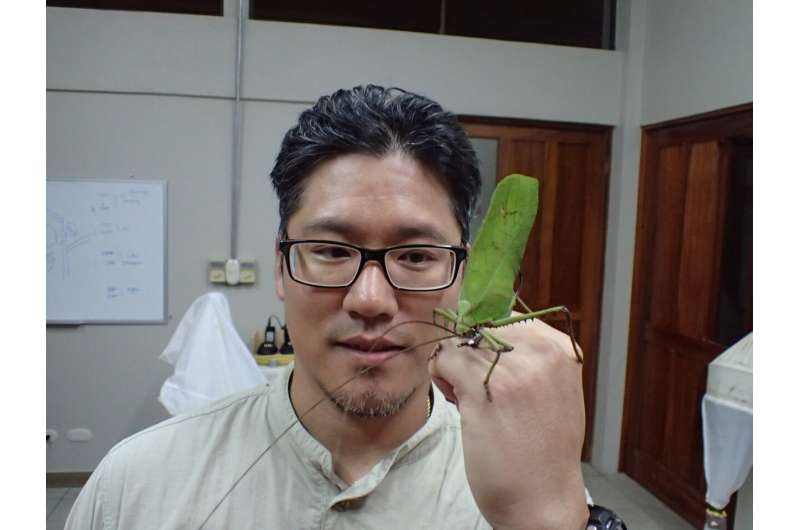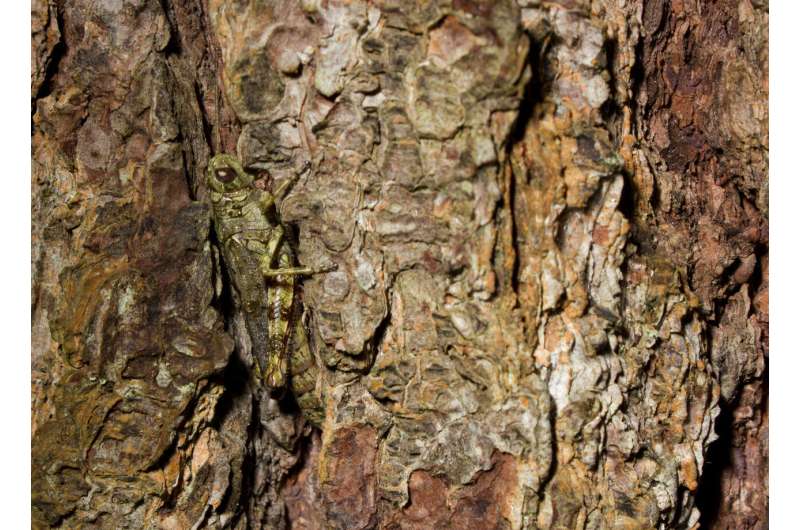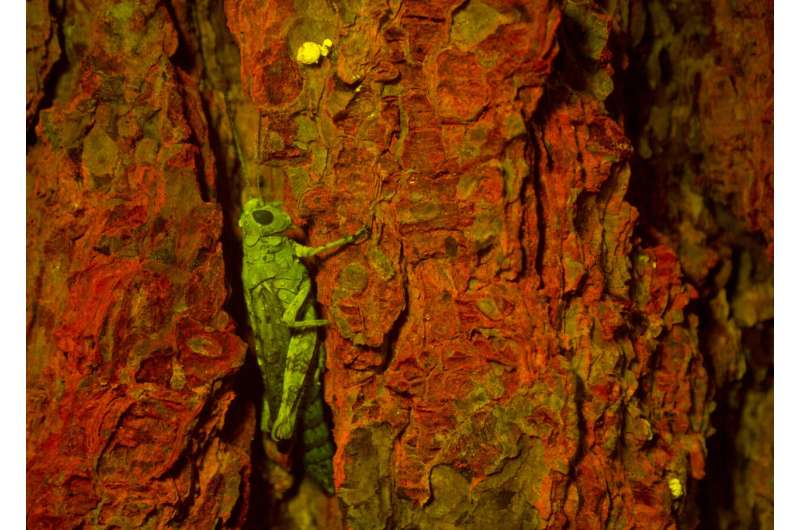Blue light assists a night hunt for bugs

A blue flashlight that makes corals shine in the sea can help spot insects in nighttime forests, according to a recent Texas A&M AgriLife study. The peer-reviewed study suggests that blue light could help with pest control, natural history research and night insect collecting.
A lightbulb goes on at a conference
The study grew out of a chance meeting at a conference between a vendor and a former student of Hojun Song, Ph.D., associate professor in the Department of Entomology at Texas A&M College of Agriculture and Life Sciences.
The conference vendor was marine biologist Charles Mazel, Ph.D., co-founder of NIGHTSEA in Massachusetts. Mazel showed Song's former graduate student Derek Woller, Ph.D., some blue-light fluorescence photographs he had taken for fun of various caterpillars and grasshoppers.
Fast-forward about a year, and Woller convinced Song to purchase one of Mazel's leading-edge blue lights to test in various lab projects. With the light, they embarked on a quest that led to the published study.
A little about fluorescence
The reason the light piqued Woller's curiosity is that some objects and animals can glow like beacons under intense blue light, a phenomenon called fluorescence. When the right wavelength of light hits certain materials, they emit light of a lower energy, or longer wavelength. The color and intensity of fluorescence depends on the material and the wavelength of light.

According to Mazel, most marine life, for example, tends to fluoresce less brightly under ultraviolet light than under blue light. When using blue light, though, yellow goggles must be worn to filter out reflected blue light and see the fluorescence.
But which insects would fluoresce intensely under blue light was relatively unknown at the time, so Woller and Song decided to check, because of the types of insects they studied.
"Those of us who work on grasshoppers, mantids, katydids and walking sticks, we actually have to go and catch them by hand," Song said. "We also do a lot of night collecting because a lot of these animals are nocturnal. We have a regular headlamp, and we just walk about and spot things or listen to their songs and try to find where they are."
Scavenger hunts in parks, fields, museum collections
Woller, now an entomologist with the U.S. Department of Agriculture in Phoenix, designed an experiment with other students to test what types of insects fluoresce under blue light. They also decided to study whether blue light could be more effective than white light for finding insects in the dark.
Woller kept in touch with Mazel, who eventually became a coauthor of the study.
Using either a blue light and yellow glasses or a white light, 12 students undertook nighttime scavenger hunts. Their task: to find freeze-dried grasshoppers Woller and other student coauthors had glued to trees in a park. Overall, the participants were able to locate more grasshoppers by looking at fluorescence.

Next, Woller's team studied the preserved specimens of several large insect collections. The students tested every order of Hexapoda, which are animals with an exoskeleton, a segmented body and six legs. Most specimens fluoresced under blue light, regardless of how they were preserved.
Finally, the team reprised the experiment in the field. Under blue light, fresh green plants tend to fluoresce red, making a strong contrast with bugs that tend to shine in green or yellow.
A useful new tool
In the end, blue-light fluorescence has become a useful tool in Song's lab. Some of the bugs Song studies, such as katydids, are masters of camouflage.
"They look like leaves, and they don't move," Song said. "Even with a headlight, they're very easy to miss. With this fluorescence, the background looks red and the insect looks green. I was like, you can just see it!"
Though the tool can't spot insects hiding behind leaves, Song said the blue light can definitely be helpful.
"We actually bought one more unit," Song said. "Now, everywhere we go, we travel with it."
The study appeared in American Entomologist in March.
More information: Derek A Woller et al. Unlocking The Dark: Harnessing Blue-Light Fluorescence to Illuminate Hidden Hexapods, American Entomologist (2020). DOI: 10.1093/ae/tmaa005
Provided by Texas A&M University



















